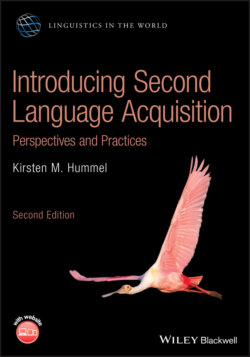Читать книгу Introducing Second Language Acquisition - Kirsten M. Hummel - Страница 38
Guidelines
Оглавление1 Count all obvious morphemes (“cat,” “baby”).
2 Count as separate morphemes grammatical markers such as the “–s” plural marker (e.g. “cat‐s”), the past tense marker “–ed” (e.g. “talk‐ed”), the “–ing” present participle marker (e.g. “throw‐ing”), the third person singular marker (e.g. “she drinks milk”).
3 Count as one morpheme plurals that do not occur in the singular (e.g. “clothes”).
4 Contractions are counted as two morphemes (e.g. “can't, “we'll”).
5 Compound words and proper names count as single morphemes (e.g. Big Bird, policeman).
6 Irregular past forms and irregular plurals count as one morpheme (e.g. “went,” “geese”).
7 Diminutives (e.g. “horsie”) and concatenatives (e.g. “gonna,” “hafta”) count as one morpheme.
8 Do not count hesitations, filler words (“um,” “hum”), false starts, or repetitions, unless the repetition is for emphasis (e.g. “No! No! No!” would count as three morphemes, i.e., one morpheme in each of three utterances).
